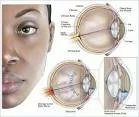 1. Your Body Mass Index
1. Your Body Mass Index
Your Body Mass Index (BMI) is determined by your height and weight; for adults, the healthy rate is 18.5-24.9, if it is between 25 and 29.9 that is overweight and anyone with a figure above 30 is obese.
Obesity puts one at risk of diabetes, high blood pressure, heart disease, joint diseases among other conditions.
 2. Time Spent Exercising Each Week
2. Time Spent Exercising Each Week
Experts advise that we do about 150 minutes of moderate exercise weekly; that is, about 20 minutes a day.
Regular exercise, is essential for maintaining healthy weight, helps your heart, your lungs, your muscles and bones.
It also reduces your risk of cancer.
 3. Time Spent Sleeping Each Night
3. Time Spent Sleeping Each Night
Everyone should try to sleep for about seven to nine hours daily and at the same time; that is 10pm to 6am or 11pm to 7am.
You can keep a dairy, I will start one today.
Poor or lack of sleep reduces concentration, affects memory and general performance. Good sleep helps to build up or maintain your immunity against diseases, helps to maintain normal blood pressure and also body weight.
To have good sleep; avoid caffeine, heavy meals and alcohol close to bed time. Also switch off all electronics by about 10pm.
 4. Your Eye Pressure
4. Your Eye Pressure
It is advisable to have your eye pressure checked annually after the age of 40 years. The condition in which the eye pressure is consistently high is called glaucoma; if untreated, can lead to blindness which is irreversible.
The normal eye pressure is 10-21 mmHg; it is usually measured by an ophthalmologist using a specific instrument. One reading is not usually enough, regular measurements showing increases are more important in diagnosis.
 5. Your Prostate Specific Antigen Level
5. Your Prostate Specific Antigen Level
It is advised that all men above 40years go for yearly rectal examination. A baseline rectal examination and Prostate Specific Antigen (PSA) level can be established on the first examination. If the urologist notices any changes, this could lead to biopsy. Such annual screening tests are normally done until the age of 75years. Development of prostate cancer after the age is not likely to be the cause of death of the particular Progression of the cancer is slow in most cases.
The PSA is a substance produced and released into the blood by the prostate gland. The normal range is 1.0-4.0ng/mL. However more important is the annual measurement; increase could be ominous, suggestive of prostate cancer.
We must state here that high PSA can also be due to infection of the prostate and non-cancerous enlargement of the prostrate.
PSA level is measured by blood test in the laboratory.
 6. Your Erythrocyte Sedimentation Rate (ESR)
6. Your Erythrocyte Sedimentation Rate (ESR)
The ESR is the rate at which red blood cells settle in a test tube in one hour; the normal range in males is 0-15 millimeters per hour while it is 0-20 millimeters per hour in women. It is slightly higher in the elderly.
The ESR level if high could be an indication of some chronic disease conditions such as infections, cancers and certain immunity conditions.




No Comments